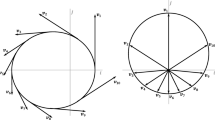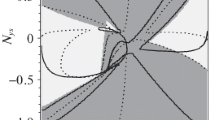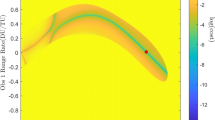Abstract
It has long been recognized and demonstrated in the astrodynamic literature that three observations of angular position are not always sufficient to determine a preliminary orbit. One reason for this is due to the fact that as the plane of the observer's motion approaches the plane of the orbit of the observed object, the determination of the orbit of the object becomes indeterminant. Merely changing the coordinate system will not eliminate the inherent indeterminacy or singularity. When the observed object is moving in the same plane as the observer, their relative motion is described in two dimensions rather than three. The problem reduces to defining two components of position and two of velocity given only three angular measures and no solution is possible. Although this singularity is a rather old, albeit infrequently arising problem in celestial mechanics, it has received renewed interest due to the advent of satellite observatories that observe other spacecraft. In this new circumstance the plane of the observer's motion is rather frequently near the plane of the object (12% to 35% of the time) and the co-planar singularity becomes a subject that deserves additional attention.
It is the purpose of this paper to develop a practical and simple method of orbit determination using four observations. This method also allows one to avoid the problem of multiple orbit-determination solution roots, and provides numerical indices that are useful in assessing the degree of indeterminacy in any given observer/object geometry. This paper does not dwell at length on the theory of orbital singularities, since they have been already treated in celestial mechanics literature. Instead, the emphasis is on the details of a new computational technique, which has been found to be computationally more efficient than previous four-observation methods, and which is unique in being formulated in the geocentric system and involves only one scalar quantity in the correction process.
The equations for the new method are developed and a numerical example is presented that demonstrates the efficiency of the method.
Similar content being viewed by others
References
Baker, R. M. L., Jr.: 1967,Astrodynamics: Applications and Advanced Topics, Academic Press, New York.
Baker, R. M. L., Jr and Makemson, M.: 1967,An Introduction to Astrodynamics, Academic Press, New York.
Escobal, P. R.: 1965,Methods of Orbit Determination, John Wiley and Sons, New York.
Henrici, P.: 1963,Elements of Numerical Analysis, John Wiley and Sons, New York.
Herget, P.: 1939,Astron. J. 48, 122–124.
Herget, P.: 1965,Astron. J. 70, 1–3.
Herrick, S.: 1971,Astrodynamics, Van Nostrand Reinhold Co., London.
Pugsley, D. W.: 1939,Astron. J. 48, 124–125.
Author information
Authors and Affiliations
Rights and permissions
About this article
Cite this article
Baker, R.M.L., Jacoby, N.H. Preliminary orbit-determination method having no co-planar singularity. Celestial Mechanics 15, 137–160 (1977). https://doi.org/10.1007/BF01228460
Received:
Issue Date:
DOI: https://doi.org/10.1007/BF01228460




